How Do I Clean A Bunn Coffee Maker? 3 Approaches For You

How do I clean a Bunn coffee maker? This is a common question for coffee lovers who want to make sure their machine keeps on producing great-tasting coffee. Regular cleaning is very necessary to keep your Bunn coffee maker in good working condition and prolong its lifespan. Over time, mineral buildup, coffee residue, and oils can build up inside the machine and spoil the flavor of your brew, besides causing mechanical problems.
Luckily, cleaning a Bunn coffee maker is pretty easy to do. You only need to descale the interior, clean the outer part, and care for it. This article will show you practical steps you can take to maintain an excellent coffee maker.
Necessary Supplies For The Cleaning Process
You will need some basic supplies to clean your Bunn coffee maker like:
- Soft cleaning cloths
- Mild liquid soap or detergent
- Deliming spring or tool
- Sprayhead cleaning tool
- Distilled water for descaling
- White vinegar for descaling
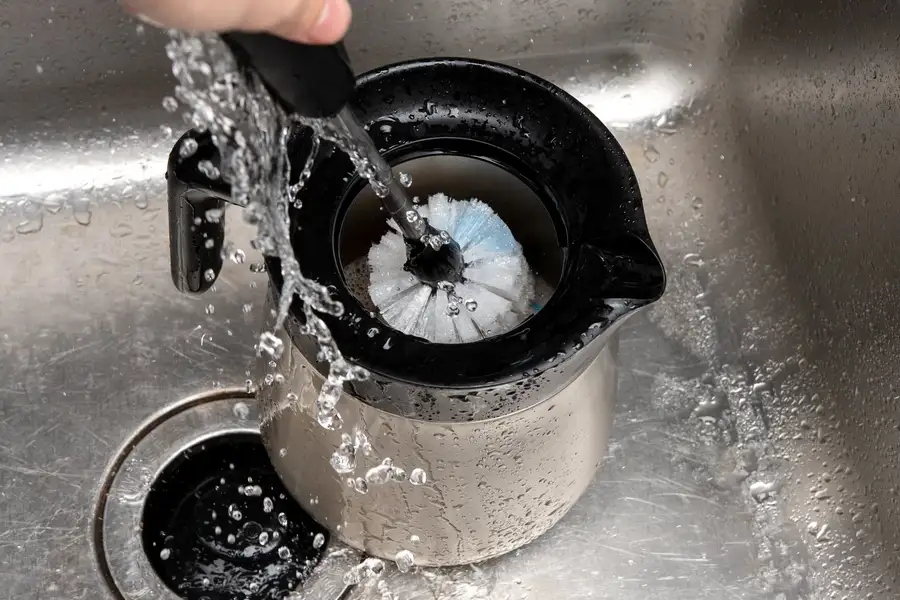
Reasons to Clean Your Coffee Maker Regularly
1. Faster Brewing
Mineral buildup can slow water flow, leading to longer brewing times. A clean coffee maker ensures steady water flow for a quick cup of coffee.
2. Optimal Performance
Scaling can block water flow and strain the machine. Regular cleaning keeps it functioning properly.
3. Better Flavor
Dirty coffee makers can alter temperature settings, resulting in bitter or bland coffee. Cleaning helps maintain great taste.
4. Increased Lifespan
Keeping your coffee maker clean prevents damage and extends its durability.
5. Reduced Bacteria Risk
The heat and moisture in coffee makers can foster bacteria, mold, and yeast growth. Regular cleaning minimizes these health hazards.
How Do I Clean A Bunn Coffee Maker?
There are 3 methods that can help you clean your Bunn coffee maker effectively:
Method 1: Cleaning and Descaling the Coffee Maker Interior
Step 1: Descale the Coffee Maker with Vinegar and Water
You first descale to remove mineral deposits and ensure smooth operation. Combine equal amounts of white distilled vinegar and water, using ½ cup of each, and pour the mixture into the hot water tank. However, we also have some ways to clean a coffee maker without vinegar. Begin to brew, but then unplug the machine mid-way, allowing the solution to soak for 2 hours to dissolve limescale buildup.
For specific machine sizes, adjust the mixture:
- 10-cup Speed Brewer: Use 1 cup of the solution.
- For smaller coffee makers, use ⅓ cup of vinegar and ⅓ cup of water instead.
- 10-cup Platinum Thermal Brewer: Use 2 cups of vinegar and 2 cups of water.
You may instead use vinegar or the mixture of 1 cup of warm water and ¼ cup of baking soda, or ½ cup of water and ½ cup of lemon juice. Use 1 non-commercial descaler filled halfway in the water container, filling the rest up with clean water.
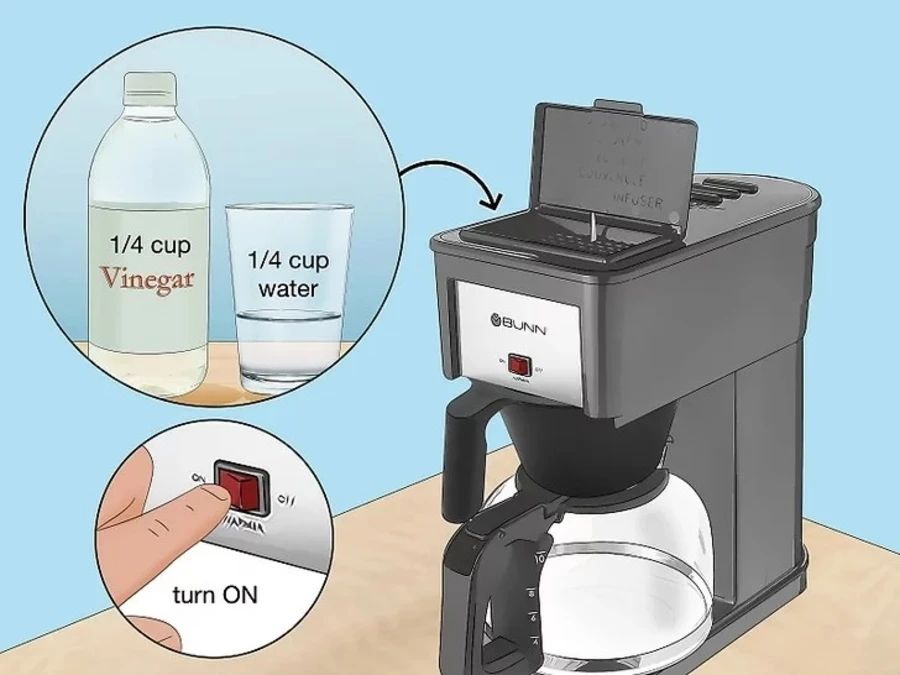
Step 2: Clean the Spray Head and Fitting
Remove the funnel and unscrew the spray head. To clear mineral buildup, you can use a toothpick to clean the spray head holes. Wash the spray head’s exterior thoroughly with warm water and a mild dish soap. Wash the exterior of the spray head with warm water and mild dish soap. You should use a straw cleaner for areas that are hard to reach. Always check the instruction book for model-specific guidelines.
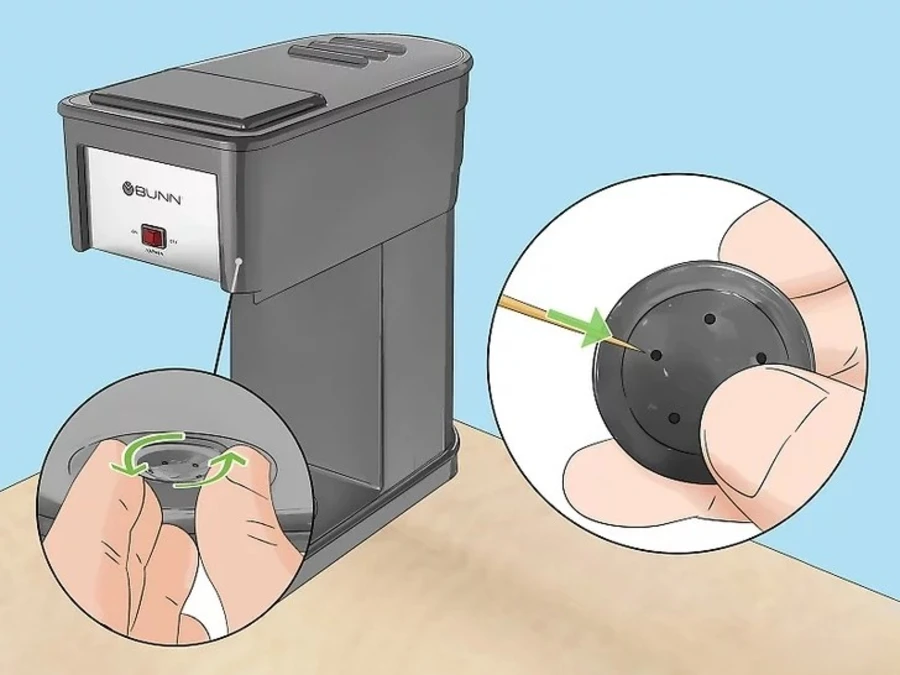
Step 3: Clean the Spray Tube
Insert a deliming tool or a straw cleaner into the spray tube after removing the spray head. Then you move the tool back and forth while rotating to clear deposits. If the machine has bypass fittings or tubes, clean these also. Reattach the spray head and funnel after cleaning.
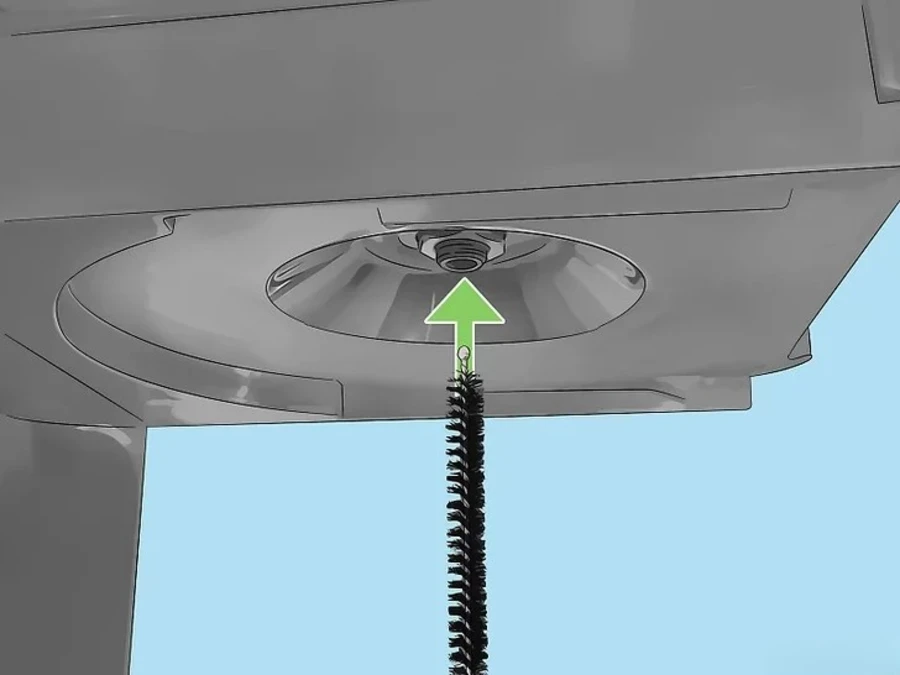
Step 4: Flush Out the Cleaning Solution
You need to put the brew funnel back in its place and plug in the coffee maker. Switch it on to finish brewing the cleaning solution, then discard the contents of the carafe. Next, you rinse by filling the carafe with fresh water, pouring it into the tank, and brewing. Repeat 3–4 times until there is no longer any hint of vinegar smell. When it has flushed, fill the tank with fresh water, switch it on, and your machine will be ready to use in 15 minutes.
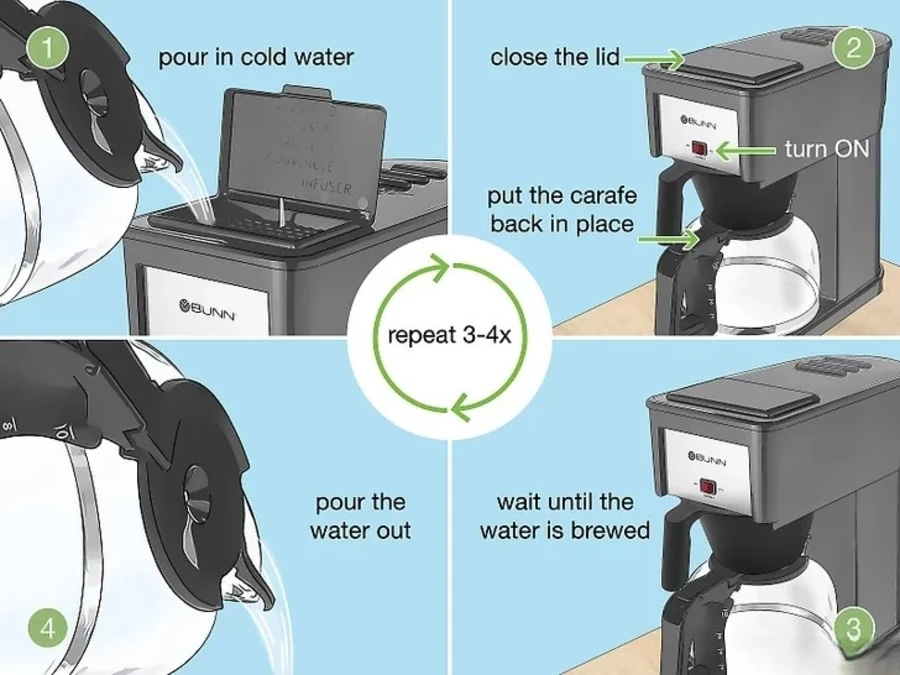
Method 2: Tidying the Exterior and Cleaning the Carafe
Step 1: Clean the Exterior of the Coffee Maker with Warm Water and Soap
You start to unplug and turn off the brewer at the beginning. Dip a soft cloth in warm, soapy water made with a gentle dishwashing detergent for wiping surfaces. Next, you wipe down the machine, with special concentration on those evident stains on it. After cleaning, take another cloth, wet with just water, and swipe across the machine again to take off the soap it just took in. At the end, dry up with a soft, dry cloth any moisture left on the surface. You can add a squeeze of lemon juice to the cleaning cloth for a new, fresh smell.
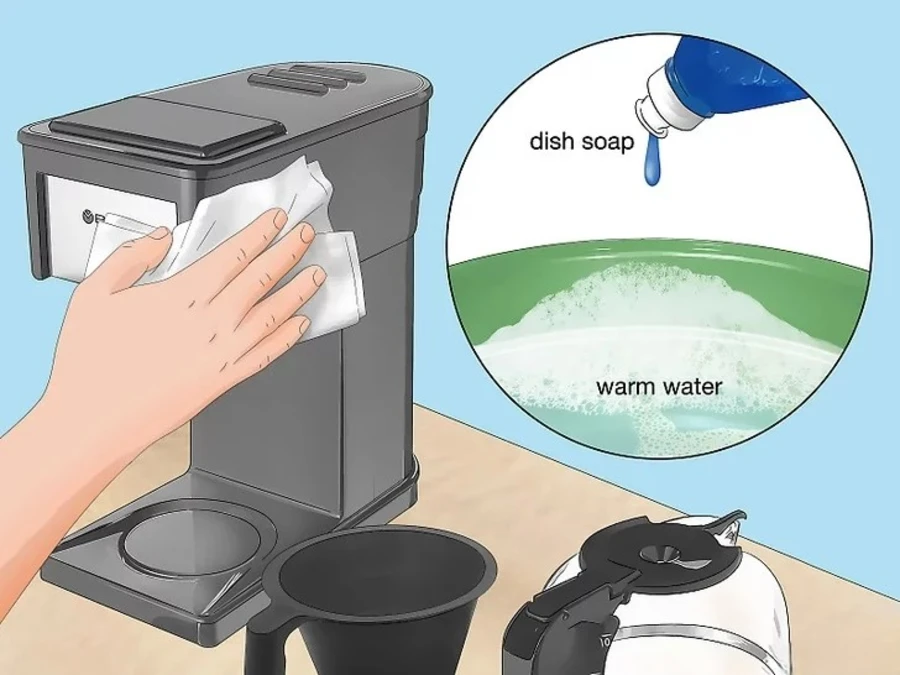
Step 2: Soak the Coffee Pot in Warm, Soapy Water
Over time, brown stains and white calcified residue can form in the carafes or pots of your coffee makers. To clean these stains, you simply fill up the carafe with warm water, add a teaspoon of unscented dish soap. Let it rest for 2-3 hours. After soaking, lightly scrub the interior and exterior of the carafe using a soft cloth. Rinse well under clean water, then let it dry on a towel upside-down. For dishwasher-safe carafes, you can remove the lid from the pot. You can place both on top of the dishwasher for a normal cycle.
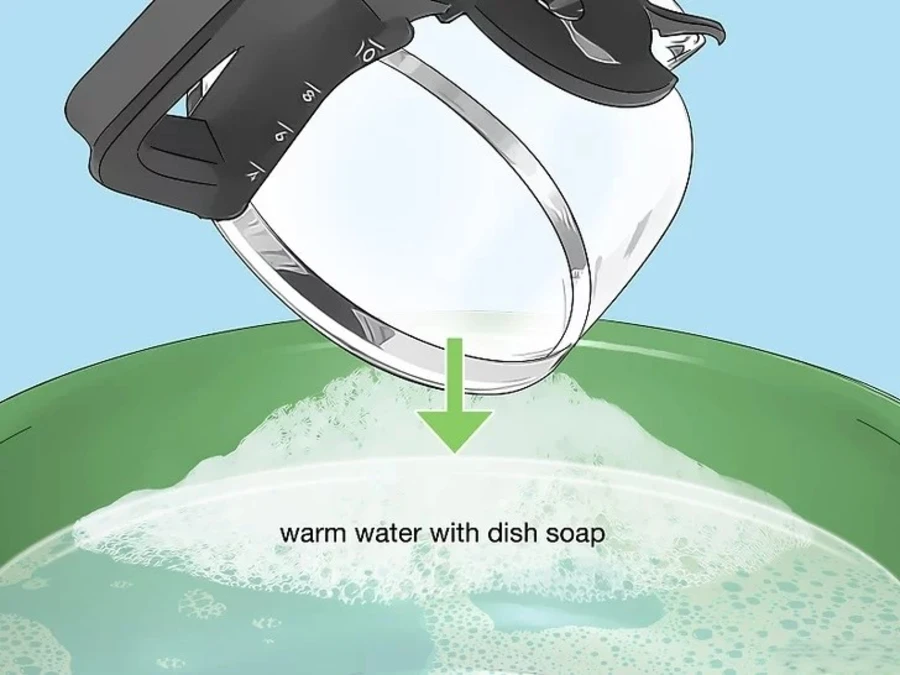
Method 3: Maintaining the Cleanliness of Your Coffee Maker
Step 1: Descale Your Coffee Maker Monthly and Clean the Carafe Daily
Descaling will keep your coffee maker running efficiently and free from any germs or mold buildup. Mineral deposits can affect the brew and heating process, and daily cleaning of the carafe helps to prevent residue and stains. The following symptoms may indicate that your Bunn coffee maker needs descaling:
- The weak or strange coffee flavor.
- Longer brewing.
- A white, chalky substance inside the machine.
- Sputtering water.
- Lower coffee output than usual.
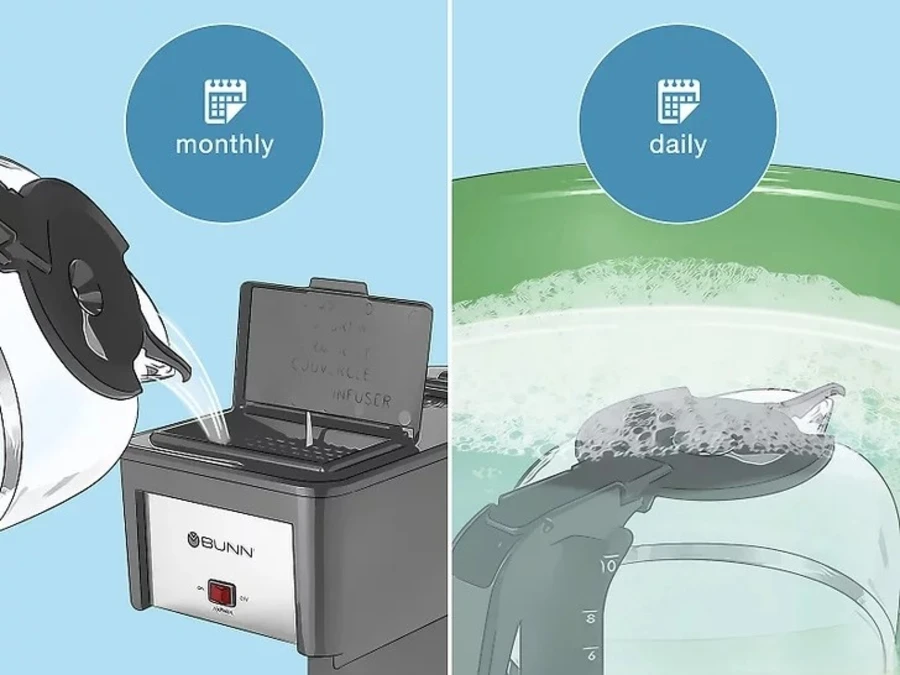
Step 2: Clean and Dry Your Coffee Maker After Every Use
After brewing, you have to discard the used filter and grounds, then rinse the brew filter with warm water and mild unscented soap. Please don’t forget to use a clean and damp cloth to wipe down any coffee residue. Dry the water tank completely. A small tip for you is that you should leave the lid open to prevent moisture buildup.
Hand-wash the carafe, lid, brew funnel, and spray head with warm soapy water and rinse well before allowing them to air-dry. Alternatively, you can place these components in the dishwasher for a deeper clean, ensuring proper sanitation.
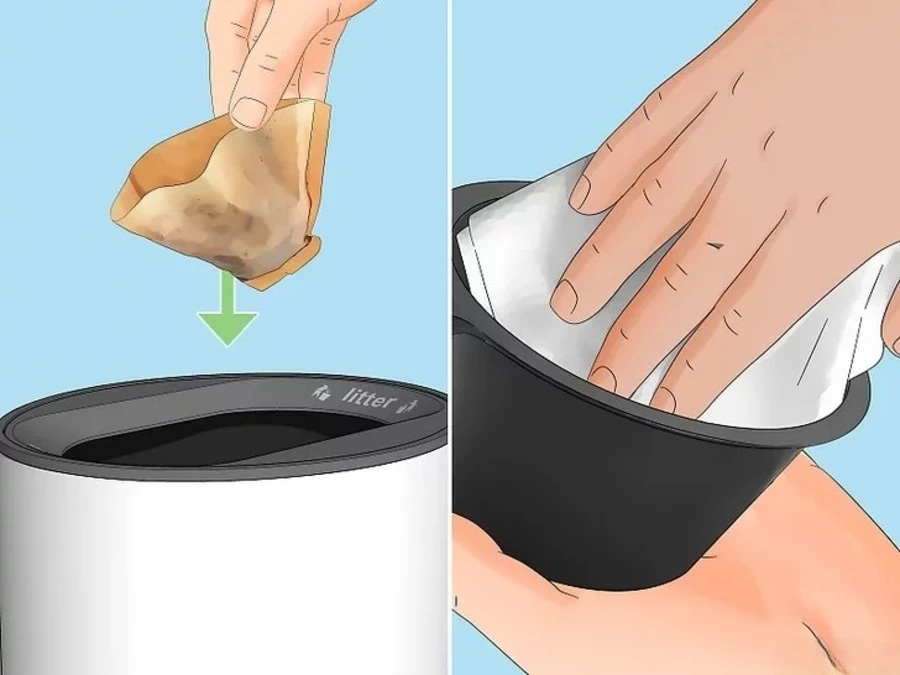
FAQs About Bunn Coffee Maker Cleaning
1. What is the optimal cleaning frequency for my Bunn coffee maker?
Cleaning frequency depends on water hardness. It is best to clean hard water areas every day to avoid mineral deposits and ensure the best performance. Cleaning 3-4 times a week will be enough in soft water areas. However, daily cleaning is still beneficial for maintaining great coffee flavor. Once you establish a routine, cleaning becomes a quick and seamless part of your day or week. Besides the Bunn machine, you can also consider using the lever espresso machines too.
2. What are some intermittent cleaning tasks?
Descaling: You should descale the machine every 3-4 months in soft water areas and monthly in hard water areas. Try to use either a commercial descaling solution and a mixture of distilled water and vinegar or lemon juice in ratios between 1:1 and 3:1. You then run a brew cycle after adding the solution to the water tank. Let it sit for 10-15 minutes, then thoroughly rinse by running several cycles with just plain water.
Deep Clean Decanters: Add dish soap to the water used, and brew in the machine if possible. Alternatively, you can try a commercial pot cleaner by soaking for 15 minutes, scrubbing, then washing well.
Replace Faucet Seat Cup: If the hot water faucet slows down, you should replace the seat cup. First, shut the cold water supply off. Then, drain the faucet. Next, remove whatever parts are necessary to expose the old seat cup. Installation of the new seat cup is then done. Finally, you can put the faucet together in reverse order. Once it has been put back together, you need to test for leaks. However, if the problem of slow flow persists, then the blockage is further downstream and you need to call a technician for further maintenance.
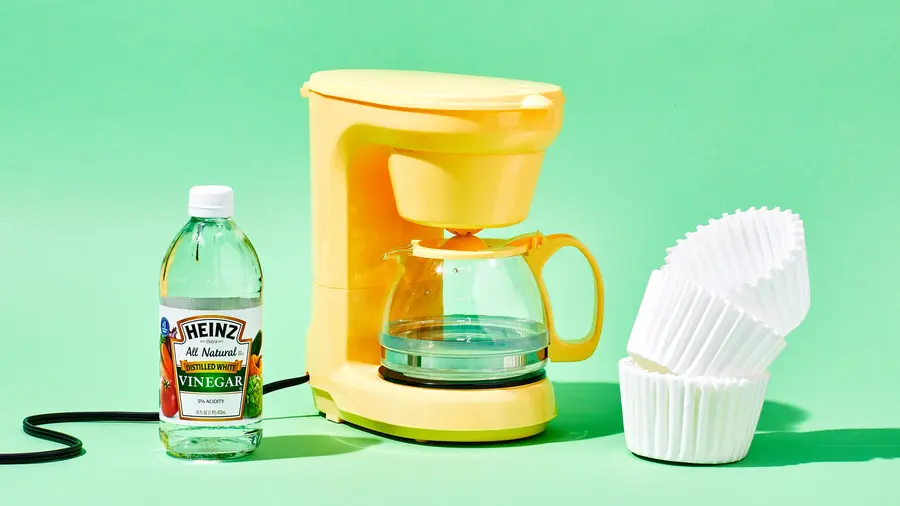
Final Thoughts
How do I clean a Bunn coffee maker? A clean coffee maker is one of the major ways through which you will get perfect-tasting coffee, besides ensuring the longevity of your machine. This guide has gone over some cleaning and maintenance of the Bunn coffee maker that will keep it at its best. Be sure to be safe and take a look at your owner’s manual for specific instructions or any model-specific recommendations.




